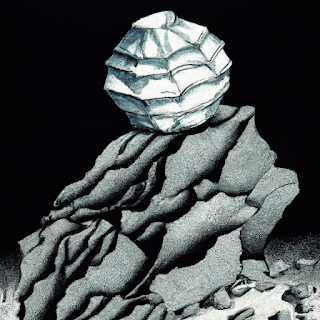Calcified Detritus: Sculpting a Curious Guardian in the Oral Landscape
In the intricate world of oral health, where teeth and gums coexist in a delicate dance of maintenance and protection, there exists a phenomenon both mysterious and intriguing – calcified detritus. Imagine a scenario where the gap under false teeth becomes a canvas for the creation of a unique and unexpected masterpiece: a hard lump of calcified detritus. As time elapses, this formation takes on a life of its own, expanding and solidifying, until it becomes an integral part of the dental landscape. Join us on a journey to unravel the enigma of calcified detritus, exploring its origins, its role as a protective guardian, and the curious cycle it perpetuates.
The Genesis of a Dental Enigma
Calcified detritus, though unconventional, is a fascinating product of the body's intricate processes. Over time, particles of food, debris, and minerals accumulate within the gap beneath false teeth. As saliva and other oral fluids interact with these remnants, a chemical dance ensues. Gradually, the minerals present in the oral environment, such as calcium and phosphate, intertwine with the trapped debris, forming a solidified mass. This transformation from a mere accumulation to a calcified structure is a testament to the body's remarkable ability to adapt and respond.
A Limpit-like Guardian: The Protective Barrier
What makes calcified detritus particularly captivating is its role as a steadfast guardian. Like a limpit clinging tenaciously to a rock, this lump becomes intricately attached to the false tooth. It serves as a natural barrier between the gap and the delicate gum tissue, providing a layer of protection that goes unnoticed until its absence is felt. This calcified shield, seemingly unassuming, acts as a buffer against potential irritation and discomfort, allowing the wearer to navigate their day with ease.
The Bittersweet Breakaway: A Tug on the Dental Tapestry
As time marches on, the calcified detritus, so diligently crafted, may eventually break free from its moorings. This departure leaves the gum exposed, tender, and reminiscent of the gap's initial vulnerability. The once-familiar sensation of calcified protection gives way to a newfound awareness of the gum's sensitivity. It is during this transitional phase that the true significance of the calcified detritus becomes apparent, reminding us of the intricate balance between dental comfort and the body's remarkable adaptability.
An Ode to Curiosity: The Character of Calcified Detritus
The calcified lump, often resembling a pebble in texture and appearance, is a veritable curiosity. It exudes a hardness that contrasts with the softness of oral tissues, and its peculiar odorless nature adds to its mystique. This dental oddity captivates not only the wearer but also dental professionals, offering a unique glimpse into the ways in which the body responds to its environment. Its formation and eventual detachment create a cycle that mirrors the ebb and flow of life itself.
The Endless Cycle of Calcified Detritus: A Dental Odyssey
As one chapter ends with the detachment of the calcified lump, another begins with the gradual accumulation of debris and minerals in the gap under false teeth. The cycle of calcified detritus continues its rhythmic dance, a silent reminder of the body's ongoing adaptation and evolution. Though peculiar in nature, this dental phenomenon serves as a testament to the resilience of the human body and its ability to transform the ordinary into the extraordinary.
In the intricate world of dental curiosities, calcified detritus stands as a silent protagonist, a guardian of comfort and a symbol of the body's ingenuity. Its formation, attachment, and eventual release mirror the ebb and flow of life's cycles, offering a glimpse into the intricate symphony of nature's design. As we continue to explore the mysteries of oral health, let us not forget the calcified detritus – a remarkable phenomenon that both confounds and captivates, leaving an indelible mark on the tapestry of dental history.







No comments:
Post a Comment